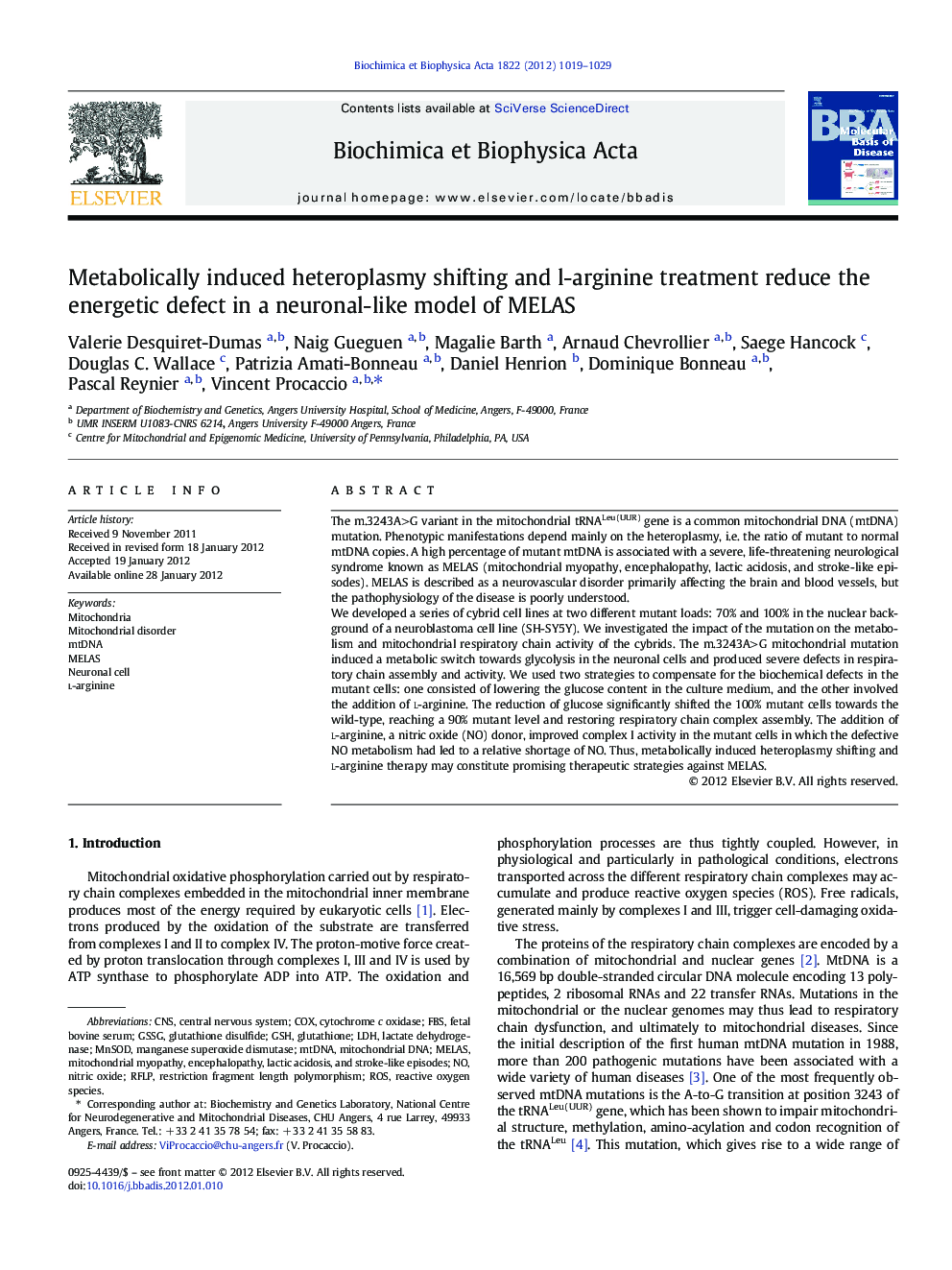| کد مقاله | کد نشریه | سال انتشار | مقاله انگلیسی | نسخه تمام متن |
|---|---|---|---|---|
| 1905004 | 1534683 | 2012 | 11 صفحه PDF | دانلود رایگان |

The m.3243A>G variant in the mitochondrial tRNALeu(UUR) gene is a common mitochondrial DNA (mtDNA) mutation. Phenotypic manifestations depend mainly on the heteroplasmy, i.e. the ratio of mutant to normal mtDNA copies. A high percentage of mutant mtDNA is associated with a severe, life-threatening neurological syndrome known as MELAS (mitochondrial myopathy, encephalopathy, lactic acidosis, and stroke-like episodes). MELAS is described as a neurovascular disorder primarily affecting the brain and blood vessels, but the pathophysiology of the disease is poorly understood.We developed a series of cybrid cell lines at two different mutant loads: 70% and 100% in the nuclear background of a neuroblastoma cell line (SH-SY5Y). We investigated the impact of the mutation on the metabolism and mitochondrial respiratory chain activity of the cybrids. The m.3243A>G mitochondrial mutation induced a metabolic switch towards glycolysis in the neuronal cells and produced severe defects in respiratory chain assembly and activity. We used two strategies to compensate for the biochemical defects in the mutant cells: one consisted of lowering the glucose content in the culture medium, and the other involved the addition of l-arginine. The reduction of glucose significantly shifted the 100% mutant cells towards the wild-type, reaching a 90% mutant level and restoring respiratory chain complex assembly. The addition of l-arginine, a nitric oxide (NO) donor, improved complex I activity in the mutant cells in which the defective NO metabolism had led to a relative shortage of NO. Thus, metabolically induced heteroplasmy shifting and l-arginine therapy may constitute promising therapeutic strategies against MELAS.
► The m.3243A>G mutation induces a metabolic switch in SH-SY5Y cybrid cells.
► Oxidative stress contributes to the pathophysiology of MELAS.
► MELAS neuronal-like cells are a good model for the evaluation of therapeutic strategies.
► Heteroplasmy shifting can alleviate mitochondrial respiratory chain dysfunction.
► l-arginine, a nitric oxide (NO) donor, reduces complex I activity in a MELAS neuronal-like model.
Journal: Biochimica et Biophysica Acta (BBA) - Molecular Basis of Disease - Volume 1822, Issue 6, June 2012, Pages 1019–1029